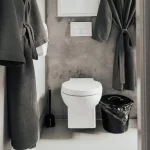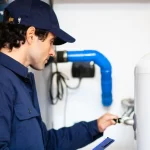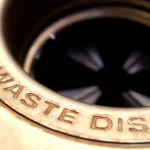Last week we wrote about preventing sink plumbing problems during Fall. With Winter rapidly moving in, here are some additional steps you can take to winterize your residential plumbing ahead of the cold weather. A bit of effort now will help you to prevent costly problems from occurring when you need them least. If you’re a snowbird flying South for the winter and leaving your home unoccupied, you might want to use plumbing antifreeze in your outdoor pipes to help keep the water flowing.
Tip # 1: Turn off Outdoor Water Supply
Unless we’re lucky enough to have a winter like the last one, chances are good your outdoor pipes will suffer when the temps hit zero or below. It’s a fact that when water freezes inside a pipe it expands, and the pressure exerted is more than 2,000 lbs per square inch. This can cause residential plumbing pipes to burst. As soon as you’re done watering your plants for the year, unhook the garden hose, empty it out and stow it indoors until Spring. At the same time, close the indoor faucet that controls your outdoor water supply. This is usually located in your basement, somewhere close to the hot water heater. Then, go outside to the garden faucet and open it fully, emptying the water pipes between the indoor and outdoor faucets.
Tip #2: Protecting Exposed Pipes
Unfortunately, it isn’t always possible to close off all water pipes with outdoor sections. It is possible, however, to insulate them in most places, wrapping them first with electrical heating tape and then with foam rubber insulation. Do this for all outdoor pipes as well as indoor pipes in unheated areas, such as attics, basements and crawl spaces. Make sure all adult members of the household know where the residential plumbing’s main shut-off valve or faucet is in case any of the pipes burst.
When the GTA expects an Arctic cold front and the temperature could drop rapidly in a few hours, open faucets to outside pipes slightly and let the water drip gently – even a trickle can prevent the water in the pipe from freezing. If you leave the house for an extended period, for example, to go on vacation to the warm shores of Mexico or the Caribbean, set your thermostat at 12 degrees C or higher and open all the cabinet doors to prevent any uninsulated water pipes under sinks from freezing.
Tip #3: Winterize Garden Sprinklers
By the end of October, you’ve likely finished watering the garden. If you have an expensive sprinkler system servicing your plants, it needs professional winterizing to survive intact. This includes turning off the water supply, then blowing compressed air through the system’s lines to evacuate any water in them. This is a good time to have your sprinkler system inspected, too, and note any damaged lines or sprinklers that will need repair before you start using them again in the Spring. If the cold arrives suddenly and you aren’t able to winterize the system in time, shut off the backflow prevention device, insulate it by wrapping it in foam insulation or other material, and purge the sprinkler lines by turning them on until they run dry.
Residential plumbing is a luxury that has become an essential part of our lives. Protect yourself from unexpected costs by taking steps to ensure that your plumbing system is safe during harsh weather. Contact your local plumber if you need services, help or advice – before the cold weather sets in.






